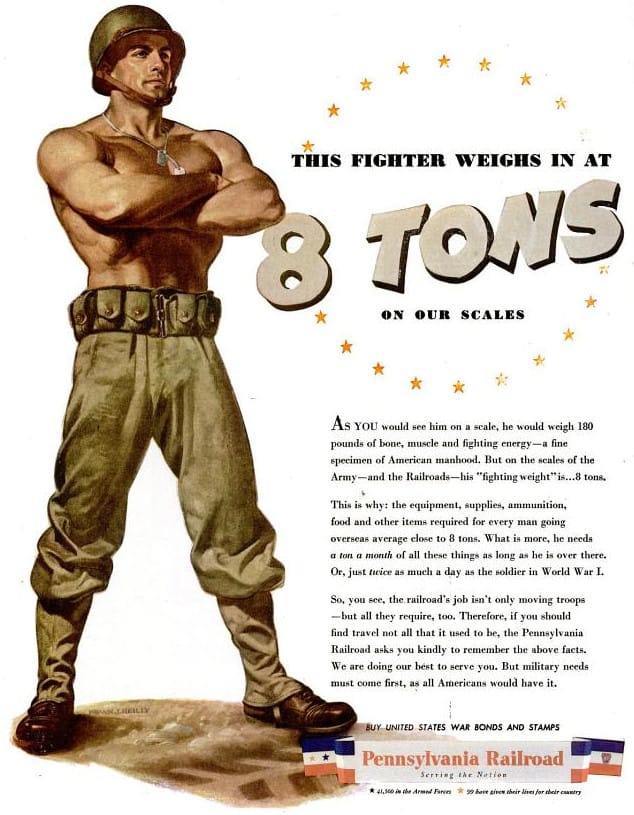I have a few questions regarding the PRR and troop trains during WWII and am hoping someone is able to answer or knows a good resource about the topic.
1) Did the PRR pull troop trains during WWII?
2) Did this include equipment (ie: tanks/guns) or only manpower?
3) Were troops and equipment moved together in a consist?
4) What type of locomotive pulled these troop trains?
My thanks in advance for your assistance.
-Greg
Greg
1. A most emphatic YES!
2. Troops are people, therefore passengers. Troop trains are, by definition passenger trains. Equipment is freight. A solid train of military equipment is, by definition a freight train.
3. Not usually. In most circumstances it was more efficient to move passengers and freight separately due to the location of railroad passenger and freight facilities, locomotive capabilities, differing track speeds, equipment utilization, etc, etc.
4. On the PRR? K4s, M1s, L1s, P5as, GG1s..........
It is hard to overstate the scope of the transportation challenges faced by the US government and America's railroads during WWII. The US Army deployed more than 60 divisions to Europe and North Africa in just over 36 months. Each division consisted of approximately 15,000 men. Only heavy bomber crews flew across the Atlantic. All Army Air Force ground crews and most airmen crossed the Atlantic by ship. That means that well over a million us troops traveled to eastern ports to board ships to Europe. And those troops traveled to the ports by train.
The main US east coast ports were Boston, New York, Philadelphia, Baltimore and Norfolk. Most US Army training facilities were in the south or west. The PRR offered connections to western and southern railroads at Chicago, St. Louis and Washington D.C. with direct service to the ports of Baltimore, Philadelphia and New York.
In peacetime New York was the busiest US port by tonnage of freight and numbers of passengers. It remained the busiest US port in wartime. While every Canadian and US liner available supported the war effort the stars of Atlantic troop transports were the British liners Queen Mary and Queen Elisabeth. Refitted for troop service they could transport all the personnel of a division in a single voyage. As in peacetime, the big liners typically called on New York.
Yesterday I spoke with a veteran of the 80th infantry division. On June 6th, 1944, he was in New York City on leave from Fort Dix when he and his buddies heard word on the Normandy Invasion. Soon they were headed to Britain on the Queen Mary. In August he sailed to Normandy on a Canadian Pacific liner. Keeping up the finest traditions of the CP the purser handed each man coming aboard a card with their berthing assignment. His read "Your Stateroom is: Cargo Hold B."
All the American and Canadian railroads handled tremendous levels of personnel and material headed from training centers, farms and factories to the ports. The eastern railroads, the New York Central, Erie, B&O, C&O, B&M, B&A, New Haven, N&W, NKP, Lackawanna and especially the Pennsylvania connected troops and material with the ports that were most important to the most violent theaters in the Second World War.
The PRR was proud of its critical roll in the war effort. Their advertising can tell us much about what the Pennsylvania was doing for Victory.















